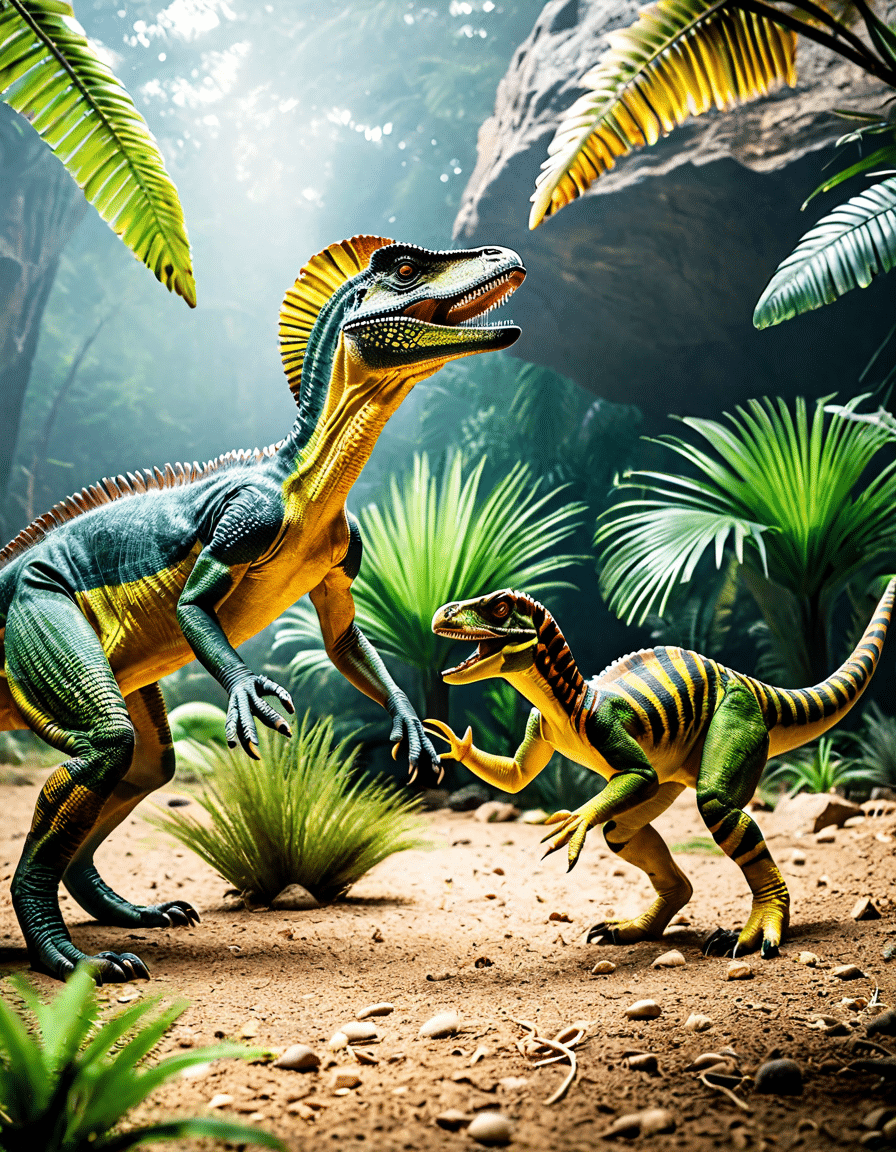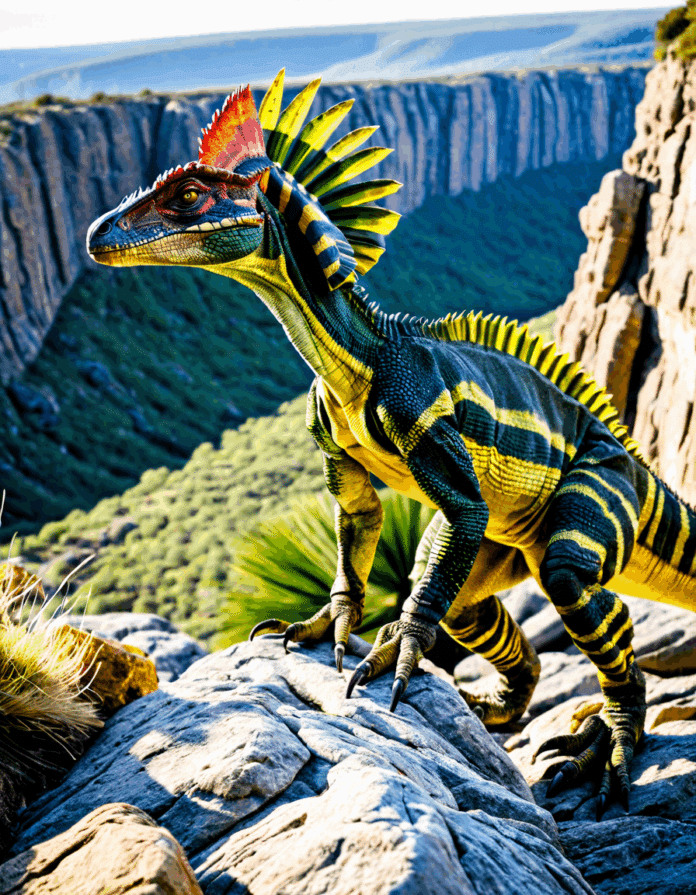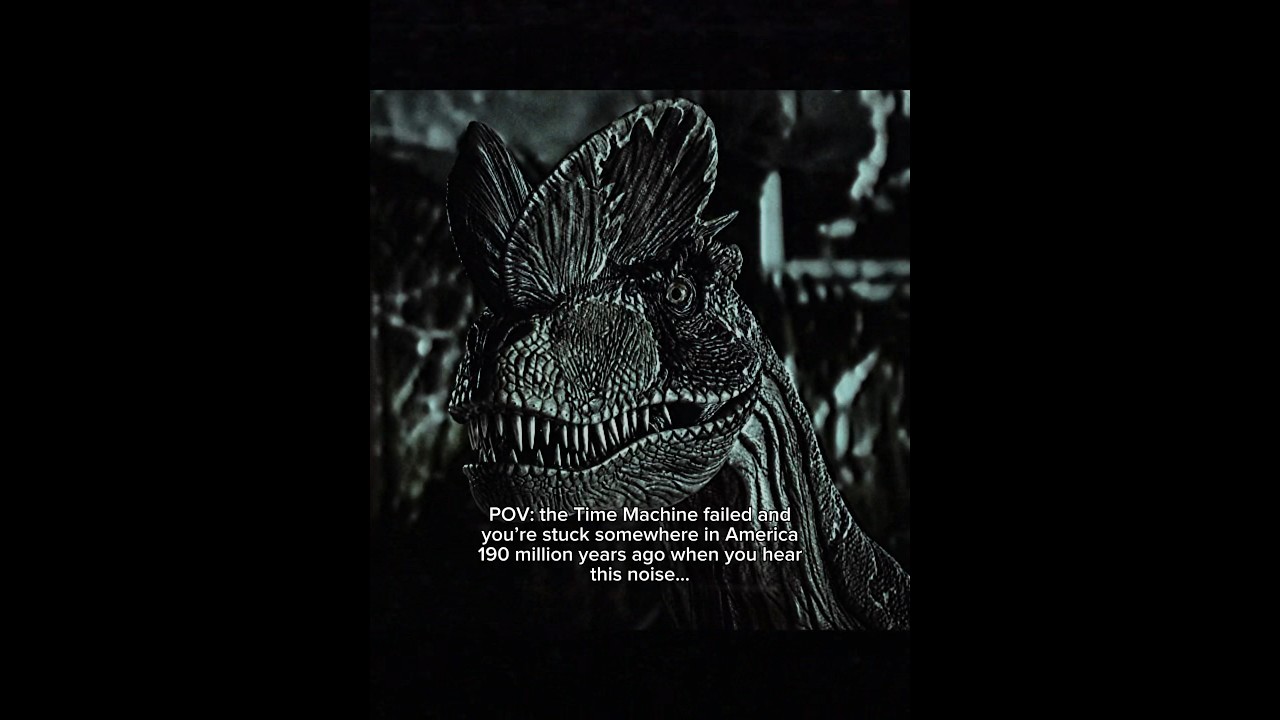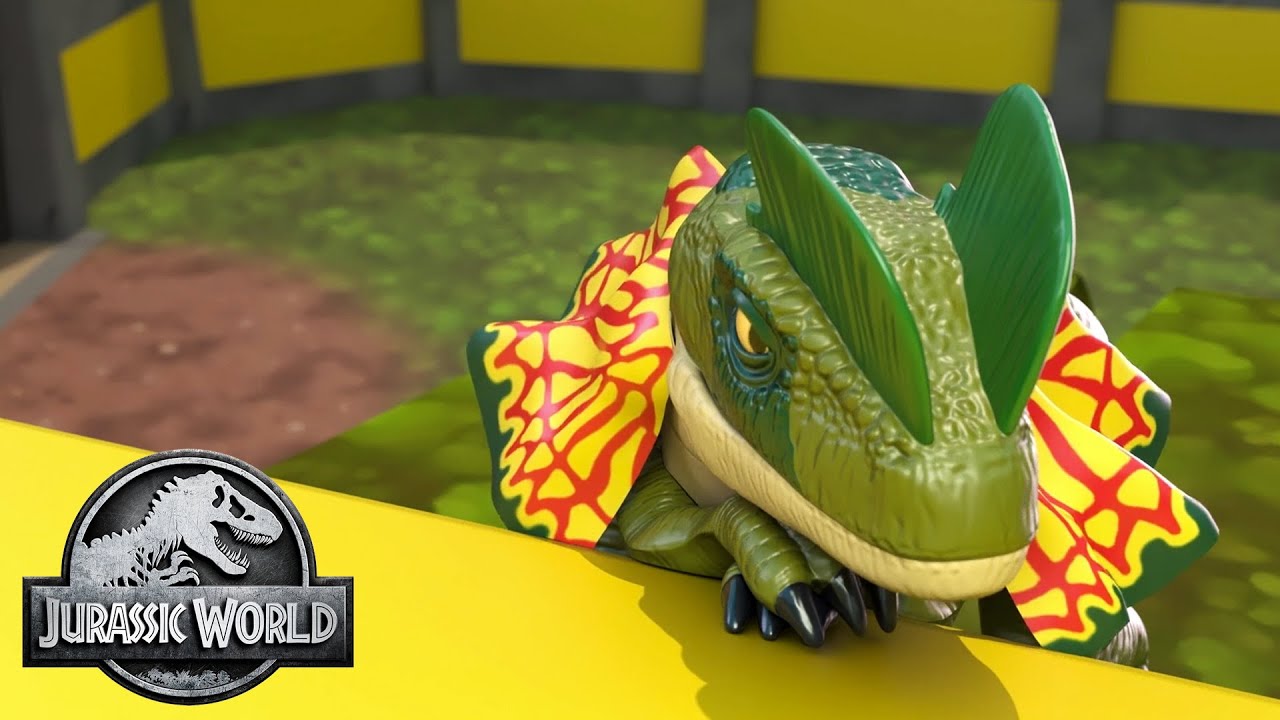Understanding Dilophosaurus: The Misunderstood Predator of the Jurassic
Dilophosaurus—the name alone conjures images of a fierce, formidable predator that prowled the jungles of the Jurassic period. Yet, this early theropod often finds itself overshadowed by more iconic dinosaurs like T. rex or Velociraptor. Stretching nearly 20 feet long and weighing around 1,000 pounds, Dilophosaurus flaunted a striking double crest on its skull, which some experts believe wasn’t just for show. These crests may have helped attract mates or intimidate rivals. What’s more, by examining its sharp teeth and lightweight frame, researchers suspect it was not only a nimble predator but might have scavenged like some modern-day carnivores.
Recent scientific inquiry reveals that the real-life Dilophosaurus didn’t spit venom or have a movable neck frill, debunking some wild myths propagated by popular culture. This creature might have primarily hunted smaller plant-eating dinosaurs and fish, thereby filling a unique ecological role in its habitat. As we delve deeper into the life and environment of Dilophosaurus, we uncover a tapestry of adaptations and interactions that paint a vivid picture of Jurassic life.
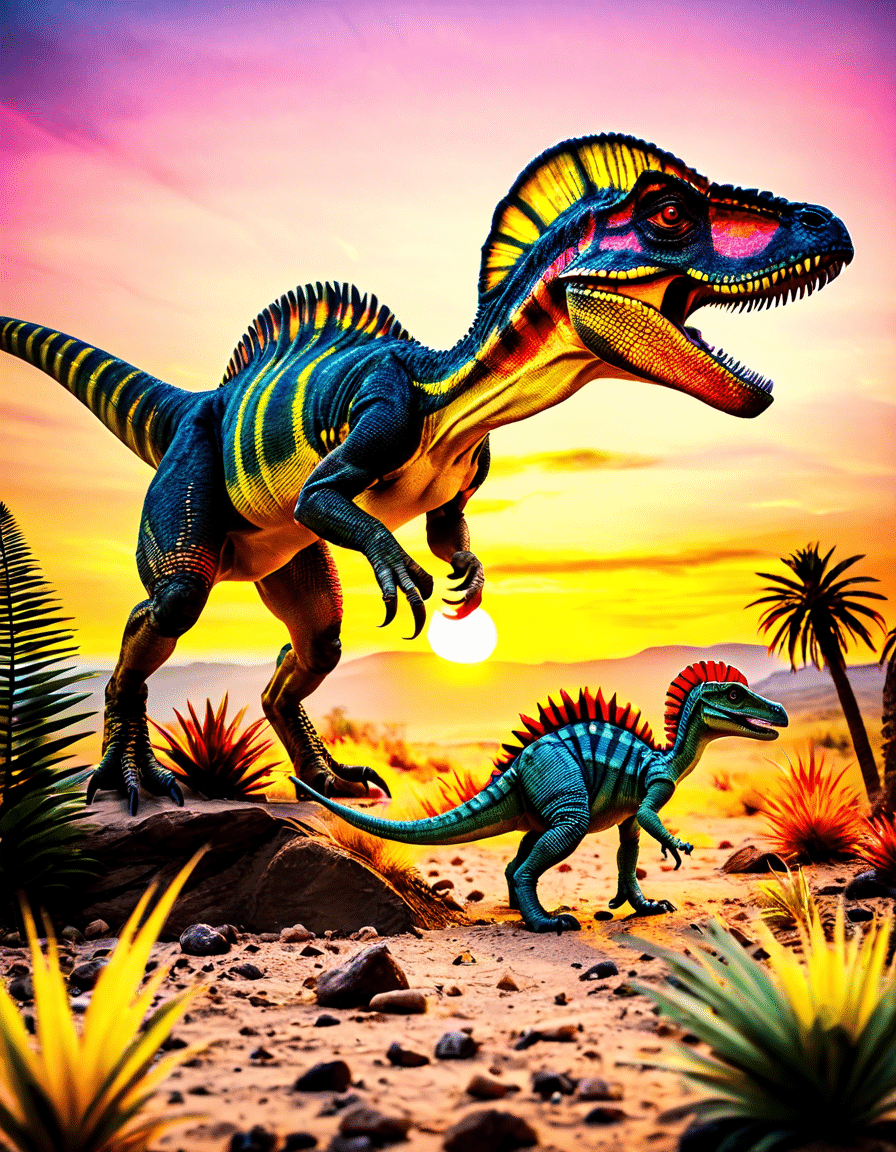
The Unique Characteristics of Dilophosaurus
The Dilophosaurus exhibits several remarkable traits that stand out in the context of its Jurassic environment. The initial features, such as its size and distinctive double crest, often lead people to misconstrue it as a more dangerous predator than it actually was. The crests, rather than serving as tools for venom delivery as falsely portrayed in movies, likely involved social signaling. Whether used in displays or attracting mates, these evolved characteristics are crucial for understanding this dino’s behavior.
Additionally, morphologically, the Dilophosaurus is fascinating. Its lightweight structure, combined with powerful hind legs, made it an agile hunter, capable of short bursts of speed that could catch smaller prey off-guard. Its teeth, sharp and serrated, were well-equipped for tearing into flesh or crushing the bones of fish—a potential part of its diet thanks to anatomical similarities with modern species.
Interestingly, fossil evidence suggests that Dilophosaurus may have exhibited pack-hunting behavior, much like wolves do today. Tracks unearthed in North America show evidence of multiple individuals moving together, hinting at a social structure that could have assisted in bringing down larger prey. Along with its crests and hunting techniques, these traits showcase how the Dilophosaurus adapted as an opportunistic predator in a bustling ecosystem.
Top 5 Facts About Dilophosaurus That Challenge Popular Misconceptions
The portrayal of Dilophosaurus in media has undoubtedly muddled public perception. In fact, here are five surprising facts about this dinosaur that dispel longstanding misconceptions:
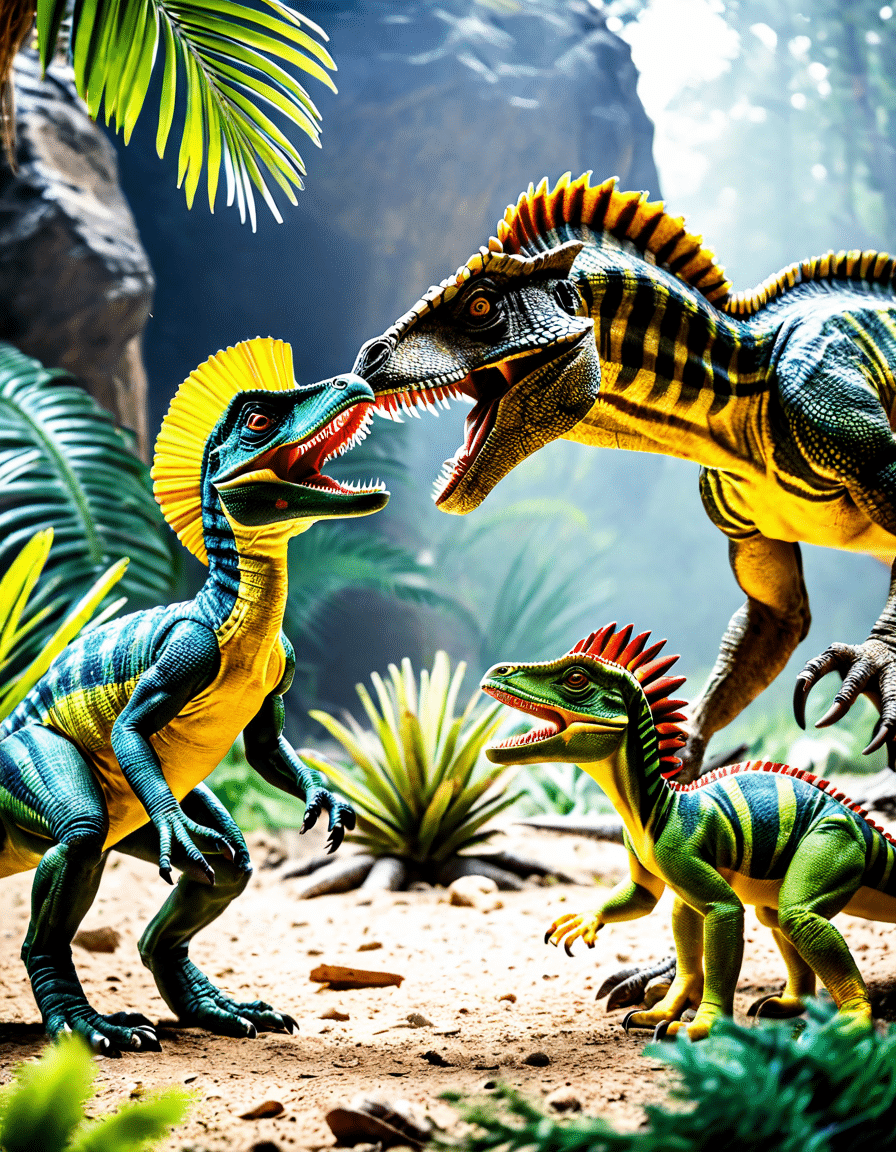
Dilophosaurus in Context: Coexisting with Brachiosaurus and Stegosaurus
Understanding Dilophosaurus in relation to other Jurassic titans helps paint a complete picture of its ecological niche. Brachiosaurus, known for its towering stature and long neck, feasted on high treetops. As a result, the areas near the ground level brimmed with smaller plant-eaters that Dilophosaurus likely preyed upon.
Moreover, the Stegosaurus, with its iconic spiked tail, added another layer of complexity to the Jurassic web. While Brachiosaurus occupied the heights, Stegosaurus grazed on low-lying vegetation. Their defensive tactics could have offered insights into how Dilophosaurus evolved agility and speed to evade predators or tap into the competition for resources.
The interplay between these species likely fostered a dynamic ecosystem where each dinosaur played a role that balanced the availability of food and survival techniques. Such interactions between large herbivores and smaller predators like Dilophosaurus create fascinating narratives of evolution, competition, and adaptation across time.
Paleoecology and the Role of Dilophosaurus
Exploring the paleoecology of the Jurassic period reveals much about how Dilophosaurus thrived amidst shifting landscapes. The lush, verdant vegetation provided ample resources, while diverse fauna established intense competition for survival. Climatic changes during this time significantly affected food sources, influencing how predators adjusted their hunting strategies.
Changes in the environment, visible through sediment analysis, indicate fluctuations in vegetation types. This impacts which creatures thrived, with larger dinosaurs generally overshadowing smaller species. Dilophosaurus, adaptable in nature, likely utilized a mixed diet that could range from fish to smaller herbivores—showing versatility that would have been crucial during tough times.
Overall, studying the role of Dilophosaurus in its Jurassic surroundings underscores the intricate relationships between predators and prey, highlighting the delicacy of survival in a constantly changing world.
Innovative Wrap-Up
The ongoing narrative about Dilophosaurus demonstrates how paleontological discoveries continuously reshape our understanding of prehistoric life. Digging beyond cinematic visions reveals a creature that was more vital to its ecosystem than mere caricatures suggest. As researchers unearth further fossils and utilize advanced technology, our appreciation of what Dilophosaurus truly embodies will only deepen, shedding light on the complex web of life during a vibrant epoch in Earth’s history.
Each finding enriches our understanding, challenging entrenched ideas and prompting us to re-evaluate the evolution of predators. In unraveling these ancient tales, we forge connections not just to Dilophosaurus, but to the compelling interconnectedness, adaptation, and survival that define life as we know it today. The Jurassic world—filled with dynamic narratives of predation and competition—grows ever more vivid and inviting, ready for exploration and learning.
Dilophosaurus: The Misunderstood Predator of the Jurassic
A Dino of Distinction
The dilophosaurus stood out in the Jurassic period, marked by its striking crests on the head. It’s often portrayed with exaggerated features in movies, leaving many to think it could spit venom or had a raucous roar. Surprisingly, paleontologists believe these crests may have been used for display purposes, attracting mates or warding off rivals, rather than for terrorizing prey. Speaking of displays, nature isn’t too different from modern productions; just like the Burnt Cast, sometimes a facade can captivate without the underlying dangers one might expect.
Interestingly, while the dilophosaurus lived millions of years ago, its image continues to inspire pop culture today. For example, the Jurassic Park franchise brought this dino to life in a way that’s stuck in our minds, much like the careers of actors like BD Wong, who portrayed a memorable role in 1993’s classic. Imagine wandering into a casino, perhaps the Twin Arrows casino, where thrills and surprises await; that’s quite akin to the excitement of unearthing fossils of the dilophosaurus!
Surprising Facts to Chew On
Did you know that the dilophosaurus was one of the earliest large carnivores of its era? Roughly 20 feet long, it had a distinctive slender posture, making it a rather agile predator compared to bulkier counterparts. This dino’s impressive hunting tactics may be likened to sharp skills found in athletes, such as the Mexico National team, who rely on speed and agility on the field.
Furthermore, the existence of the dilophosaurus was vital to understanding dinosaur evolution. Its dual crests possibly indicated social behaviors, and thanks to paleontologists and their appraiser definition knowledge, we can now appreciate these ancient creatures even more deeply. Just as a keen appraiser evaluates a unique piece of art, these experts dissect fossils to unravel the mysteries of our prehistoric past. Likewise, modern storytelling often takes a thrilling turn, similar to how Anna Torv weaves gripping narratives on screen.
The Curious Journey of the Fossils
Fossils of the dilophosaurus have sparked debates and curiosity. The first remains were found in the 1940s in the Navajo Nation, coexisting with other predators, reminding us of a diverse community, much like the dynamic interactions we see in modern times. As new discoveries emerge, like the rise of young prodigy Mirra Andreeva in tennis, the story of these magnificent creatures continually evolves. Each finding adds layers to the narrative around the dilophosaurus, challenging previous ideas and keeping enthusiasts on their toes.
The continued exploration of fossils keeps the spirit of the dilophosaurus alive, and whether dressing a stage or scouring the earth for gems, the thrill of discovery binds us across time. Just as film directors are up For film festivals, these ancient remnants continually invite us to look deeper, revealing lessons and insights waiting to unfold.
